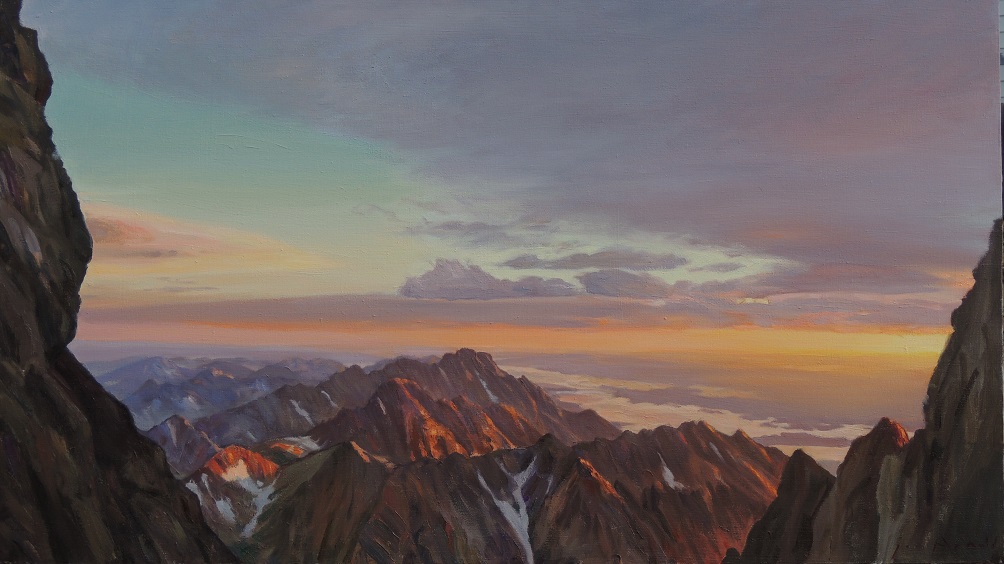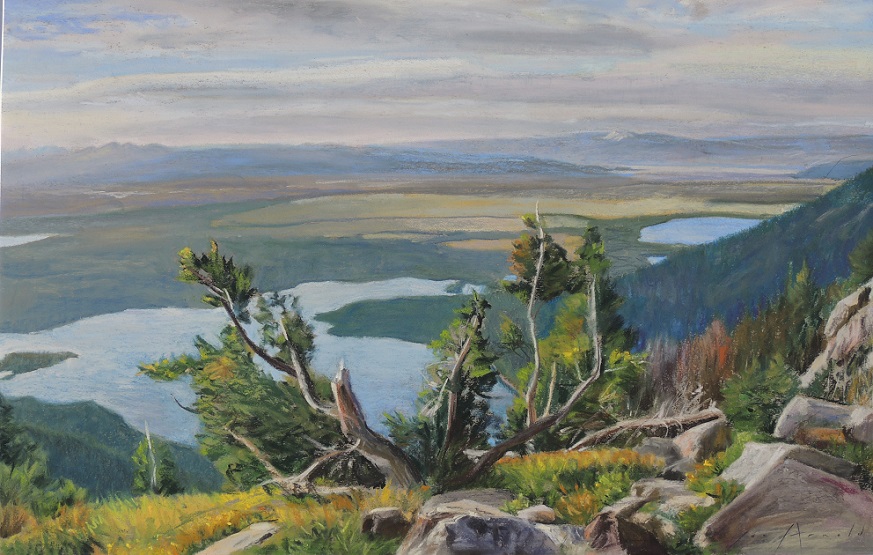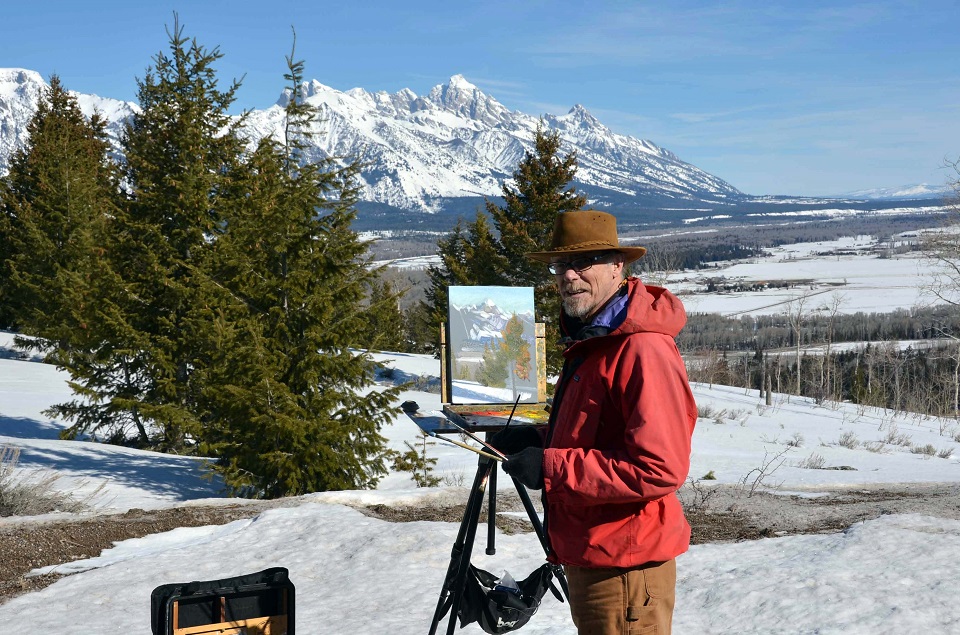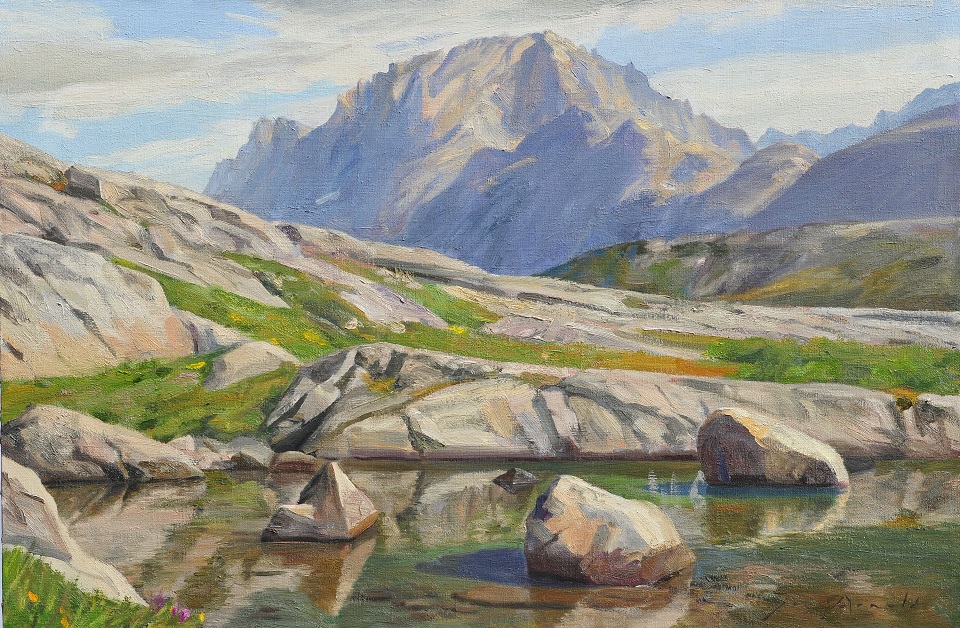Wyoming artist Joe Arnold paints en plein air on mountaintops.
by Pattie Layser
Originally featured in Southwest Art, June 2007
Joe Arnold maintains that hard-to-reach places - places high above the everyday crowds - are essential for discovering the thrills and risks that define one’s limits. “Such places are rare,” he admits, “but you can still find them in Wyoming!”
Arnold is the fifth of seven generations to make Laramie, WY, his home, and while his experiences of Wyoming doesn’t replicate that of other family members (such as his great-great-grandfather Franklin Luther Arnold, a missionary to Native Americans), what Arnold finds in the West does: “My ancestors all came here for adventure and ‘to find themselves,’ and that’s essentially what I have done in the high mountains.”
The 53 year old artist is an avid mountaineer who’s known for the high altitude panoramas he paints atop mountain summits. An annual participant in the Buffalo Bill Art Show & Sale in Cody, WY, Arnold’s been nicknamed “the plein-air artist of thin air.” A brochure for the exhibit once described a painting of his as “done at the end of a rope, the artist’s feet hanging over a yawning precipice.”
Arnold, his wife, Alison, and their three children (Jason, now 28, April, 22; and John, who died in 2005 at the age of 27) all hiked and climbed as a family from the time the children were young. An outing to Silas Canyon in the 1980’s gave rise to Arnold’s top-of-the-world paintings. “You won’t find ‘Malted Mountain’ on maps of the Wind River Range, but it’s a real place in Arnold family legends,” says the artist, grinning.
“I was taking the boys higher up to escape the mosquitos - climbing fueled by lots of chocolate malt tablets! - when I realized that, for me, the views from mountaintops looking down are as good as it gets.”
Why, he wondered, was no one painting summits?
Even now, a quarter century later, no one else paints mountains the way Arnold does. “I guess you could say I like the epic view, scenes that transcend the mundane and let one’s soul and imagination soar.”
On canvas, Arnold not only shows viewers how mountaintops look, he lets them peer over the edge. In the colors born of rarefied air, he renders in oils and pastels the sentiment that John Muir expressed after his first ascent of Mount Ritter: “How truly glorious the landscape circled around this noble summit! - giant mountains, valleys innumerable, glaciers and meadows, rivers and lakes, with the wide blue sky bent tenderly over them all.”
Arnold’s highest painting was done at 18,000 feet on a glacier in the Bolivian Andes. While dramatically conceived, the painting is nonetheless delicate and ethereal - a cloud-softened pinnacle portrayed in pastels. But it’s a painting that Arnold began during his residency at the Ucross Foundation in the summer of 2005 that best illustrates his vision. He arrived with a thick sheaf of studies in hand and left with a 15-foot painting of Disappointment Peak. The scene is anything but disappointing, though. “It was named by a group of mountaineers who thought climbing the peak would allow them to summit Grand Teton,” he explains. “At the zenith, they found themselves separated from the Grand by a 2,000 foot chasm.” A grandly scaled triptych in oil, the painting captures the panoramic vistas one sees from the summit. The University of Wyoming purchased the painting for the school’s permanent collection.
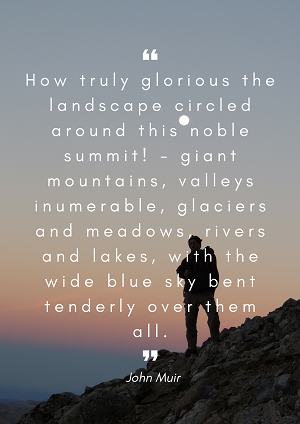 “That one I had to frame myself,” says Arnold. “I’d shaped the two end canvases, curving them downward to emphasize both the summit and the beauty spread out below. Quite often I’ve used a wide-angle panoramic approach that includes a slight curve to indicate that the scene surrounds the viewer. Most recently I have been working on a diorama that comes out from the wall at the edges and literally does surround the viewer.”
“That one I had to frame myself,” says Arnold. “I’d shaped the two end canvases, curving them downward to emphasize both the summit and the beauty spread out below. Quite often I’ve used a wide-angle panoramic approach that includes a slight curve to indicate that the scene surrounds the viewer. Most recently I have been working on a diorama that comes out from the wall at the edges and literally does surround the viewer.”
Even painting the iconic splendor of the Grand Tetons - something he’s done almost annually since he was 9 years old - Arnold wants to be high above the rest of the artists who set up their easels on the valley floor. And that means adding 10 to 12 extra pounds to his climbing gear. “I began packing my camera and art supplies up in 1982,” says the artist, who does his plein-air studies in pastels. “I take about 20 sheets of paper with me, protecting the finished studies by covering them with glassine and sealing the edges with tape.” Features delineated in each small pastel study are critical to his subsequent oil paintings. At home in his studio, he strings these chalked pieces into a mountain range, their artistic details augmenting his memory and the camera’s overview.
“Because I do my own ‘research,’ mountaineers often recognize the routes and vistas that I’ve painted in the Winds and the Tetons,” says Arnold. “As a climber I have great respect for the features of the mountains I paint. But in the end, I’m an artist. I have to see a mountain panorama as shape, color, and value. For the integrity of the composition, I move landforms around when I need to. And I work constantly to keep my brushworks loose - allowing some poetry into what could otherwise become a topographical study.” For Arnold harmony in mountaineering and in art is a balance of lyricism and realism, emotion and discipline.
Snow-Laced Winds and thunder-backed lightning - arduous conditions as elemental to mountain climbing as racked muscles and cracked lips - never outweigh Arnold’s hunger for the untried and extraordinary. “I’m not content doing what’s been done before,” he says. And Alison, also an accomplished artist, stewards his quest. “We’re a family, a team,” he says fondly. “Alison did studies for the triptych also. We climbed Disappointment Peak together twice, starting in the dark from our base camp at Amphitheater Lake and each working steadily for six to eight hours.”
Arnold, who graduated from the Philadelphia College of Art, has been a serious artist for more than 30 years. The tall, lanky artist doesn’t paint in the Romantic tradition of western landscape artist Albert Bierstadt, also known for his mountain scenery, but Arnold does feel that their life views are simpatico. Bierstadt was an adventurer, an explorer who attained great heights. “His sublime sense of landscape was his reward for being an intrepid traveler,” observes Arnold. “Bierstadt worked hard to find uncommon beauty that’s inaccessible to the common man. Bierstadt could never have sat at a scenic turnout painting anymore than I can.
“I love the feeling of going where nobody else goes,” Arnold continues. “When I painted Gannett Peak from Mount Febas, I was completely alone on a 17-day backpacking trip. There was no way to get there except by foot. The first day the wind almost swept me away, but when I saw the view across to Gannett...well, it was the epitome of what I want to do - paint rarefied scenes that few others see.”
Perhaps cathedrals with spires racing heavenward reflect the inspiration that humans draw from high peaks. Arnold's endeavors suggest that art is nature revisited; that the world - and art - were each created to hold the spirit of greatness.
Down from the mountains, in his community and beyond, Arnold shares his knowledge, talent, and values. He’s traveled throughout the state as curator of the Ann Simpson Artmobile Program. He’s instructed classes at several Wyoming colleges, as well as conducting numerous workshops and teaching for two years as a Wyoming Arts Council-sponsored artist-in-residence. More recently, he spent a month at Jackson’s National Museum of Wildlife Art as their artist-in-residence.
But ask him what he gives back, and his response is modest, personal. He talks of his family and his church. He talks about the many years he and Alison have shown young people how to experience wild places safely; “In 1983 my brother Drew and his wife Mary, formed Solid Rock Outdoor Ministries, a kind of ‘Upward Bound’ program. What began as a mom-and-pop operation is now a Larmie-based organization with a year round staff serving 300 students a year. We've taught there since its inception , and now our adult children are teaching there with us.” The mountaineer artist is now teaching a new generation about outdoor passion, about toughness and humility.
For Arnold, seasons spent among Wyoming's jagged peaks have forged a rugged and poetic man. Like the generations of his family before him, he embodies the legendary spirit of the West and the celebration of new Frontiers, both mental and physical. In his thirst for adventure and freedom, he continually climbs higher to find the creative answers to what it means to live well and compassionately.

